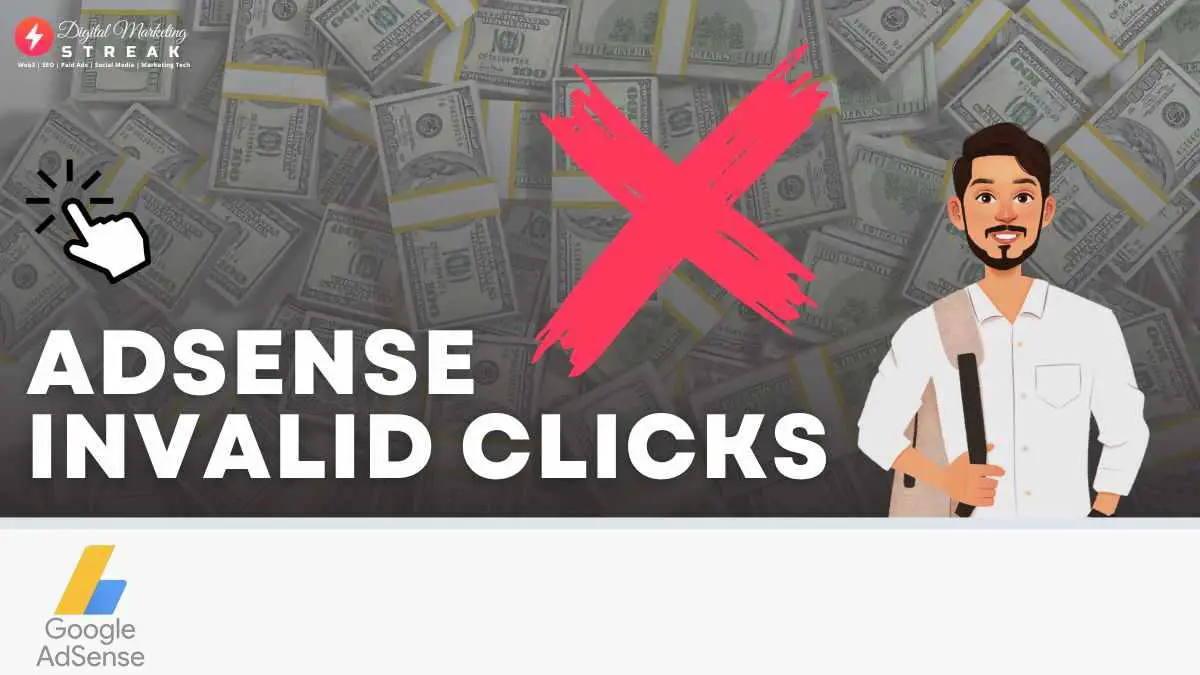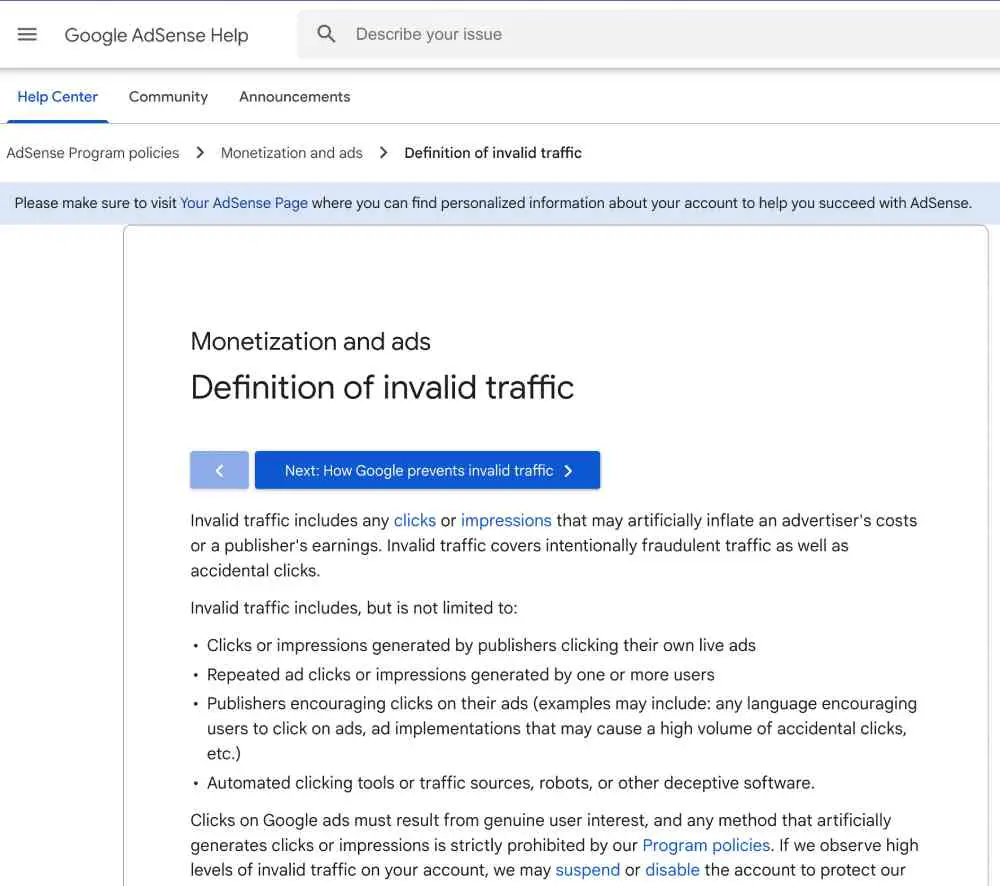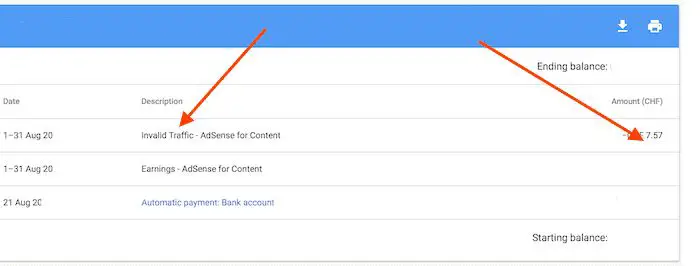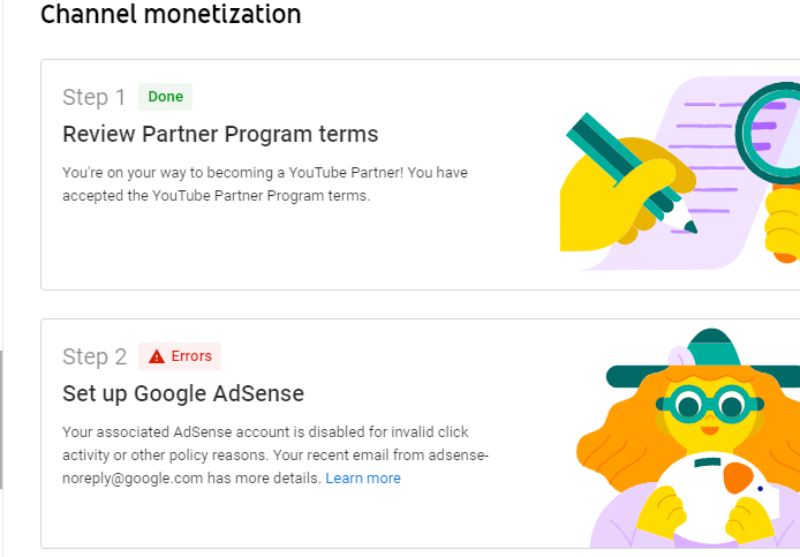Google AdSense is the most popular ad network for websites to monetize their content by displaying ads on their web pages. These ads help the website owner generate revenue for each impression and click they get. This incentive has led many website owners toward fraudulent use of invalid clicks which generates clicks on ads displayed on their website coming from unoriginal and inorganic sources.
To prevent invalid clicks, Google AdSense has issued rigorous penalties for websites that are found to be using invalid traffic and clicks to boost their ad revenue.
If you have a website that runs ads, you should understand the why’s and how’s of invalid clicks and prevent this from getting your website banned from Google AdSense.
Table of Contents
What Are Invalid Clicks?
Invalid clicks refer to clicks made on PPC ads displayed on a publisher’s website without the intention of clicking it for the sake of the ad.

Basically, if an ad is clicked by a person without them being actually invested in what was shown in the ad, it is considered to be an invalid click.
By this definition, there are many types of invalid clicks. Some are accidental misclicks but others are intentional that fit into the category of Click Fraud.
Click fraud refers to artificially and intentionally boosting clicks on an ad for fraudulent purposes.
Most commonly, this is either done by competitors to get a website into trouble for AdSense or by the publisher themselves to improve their ad revenue.

The most popular kinds of invalid clicks are:
- Accidental clicks made by humans with no actual intention of exploring the ad.
- Publishers clicking on their own ads in an attempt to generate more ad revenue.
- Intentional and repeated clicks made from click farms (organizations that hire people to click on ads to help a publisher earn more ad revenue)
- Intentional and repeated clicks made by bots.
Why Are Invalid Clicks A Bad Thing For Google AdSense?
Invalid clicks are penalized by Google AdSense because it ruins ad campaigns. Basically, the way AdSense works is by selling ads to companies and displaying them on AdSense supported websites. To incentivize publishers to generate more traffic for those ads, AdSense pays publishers for each click that they receive on a PPC ad.
However, if these clicks are invalid clicks, it is artificially boosting revenue for a publisher even when they don’t deserve it. This would lead to AdSense paying you for clicks that were not originated organically, and since the companies that use AdSense to display their ads only want to pay Google to get clicks from actual humans that have the intention of clicking their ads, invalid clicks bring nothing but losses for AdSense and the ad publishers.
Subsequently, AdSense has now penalized the use of invalid clicks. If a website is found using invalid clicks as a strategy to boost its revenue, your AdSense account can be suspended or even banned.
How Google Detects Click Fraud
Since Invalid clicks ruin the core essence of Google ad campaigns, Google has put a lot of emphasis on detecting click fraud and invalidating clicks that aren’t organic.
The following are some tools Google has employed to invalidate clicks made from artificial sources.
IP filters: Every time Google detects a number of clicks either from unusual IP addresses or the same address for repeated clicks, Google invalidates the clicks and does not count them for billable activity.
Spam clicks: Google also uses its database that has already identified spam and suspicious clicks and stops these from ever appearing or registering on your website.
Manual checks: For unusual cases that came out clean from automated filters, Google may manually check your website to look deeper into the matter.
Researching: Google researches internet data and botnets using the best engineers in the world to bring even more advanced innovations for detecting invalid traffic.
In addition to the above-mentioned tools, here are some other factors that Google makes use of to detect and block invalid clicks.
IP Address
Each click on an ad comes with the IP address the click was generated from. This helps Google collect data for each click and categorize IP addresses. For IPs that originated from unusual sources (for example, if your website has never had traffic from middle eastern countries but now suddenly gets many clicks from IP addresses of that location) and the IP address of the publisher themselves, Google invalidates their ad clicks and does not bill them for ad revenue.
If unusual IPs are consistently used for invalid clicks, Google may end up penalizing your website for click fraud.
Clicking Pattern
The different clicking patterns of invalid clicks are probably the biggest indicator for Google to detect them.
Basically, Google always keeps a check on the average behavior of visitors to your website. If these visitors suddenly start clicking on your ads, or if most of the traffic doesn’t click on your ads but there’s a small chunk of IP addresses from a location that generates the most clicks, Google will identify this as abnormal behavior suspecting it for Click Fraud.
CTR
Click Through Rate refers to the ratio of visitors that view an ad and actually click on it. CTR is a popular metric used to identify the performance of ads. But Google also uses this to identify invalid clicks and click fraud.
If suddenly most of the traffic on your website starts clicking on the displayed ads, your CTR would jump through the roof and alert Google for suspicious activity of invalid traffic and clicks.
Traffic Source
Another popular indicator for identifying invalid traffic and click is the source that a visitor used for getting on your website.
If the sources are mostly from social media pages, Google can identify this as a publisher promoting clicks on their website from their own social circle and will count it as invalid clicks.
The same goes for any traffic that comes in from unauthorized and reputable search engines. This indicates a possible use of botnets or click farms.
Misleading Ad Placements
If you’re ever been on shady websites (mostly piracy ones), you will have ads on the website that are under disguise. As such, you sometimes end up clicking on an ad even if you didn’t intend to.
This is done by publishers intentionally to boost the CTR for ads displayed on their websites. Ads can be placed extremely close to clickable content that users may accidentally click the ad for a misclick sometimes. In other cases, the ads are under the disguise of a clickable button itself (for example a Download button which isn’t really for download but is just a redirection to an ad).
These misleading ads are against the policies of Google AdSense and all ad clicks through these means are counted as invalid clicks.
Why You Should Check Invalid Clicks On Your Own?
Invalid clicks aren’t always generated by the publisher themselves. In many cases, invalid clicks and traffic is being generated without the knowledge of the publisher. This is either done accidentally through a bunch of factors or purposefully by a third party with malicious intent.

A popular intentional way this happens is when a competitor in your niche hires click farms or botnets to crawl your website and click on ads. While this may sound like they’re helping you, the opposite is really a matter of truth. Their intention is actually to get your website reported for suspicious activity and penalized for click fraud.
Unintentional factors that lead to invalid clicks are accidental redirects, accidental clicks, use of expired domains, etc.
In either case, you can get warnings and penalties from AdSense, which is why you should always keep a check on the traffic your website receives and the clicks your ads receive.
How To Prevent Invalid Clicks From Your Website?
The first thing you should do to eliminate most bot activity on your website that could result in invalid clicks is by enabling Bot filtering from Google Analytics. Here’s how to do that:
- Head over to Google Analytics and login to your account.
- Now go to the Admin page.
- Click on the View tab and then click on View Settings.
- Scroll down and check the option of Bot Filtering.
- Finally, click Save.
Google will now prevent your website from being accessed by bots that are recognized by their system.
In addition to that, here are some other helpful ways or preventing invalid clicks on your ads:
- Never click on your own ads
- Check for sudden spikes in your ads’ CTR – this could be bot activity.
- Check for sudden surges in impressions on your ads – this could be bot activity.
- Check for a high bounce rate – this could mean your website is facing invalid traffic or bot traffic.
- Have a third-party business analyze and validate your traffic.
Conclusion
In summary, invalid clicks are a dangerous thing that can get your website penalized or banned altogether. Over time, Google has discovered many methods that are successful at detecting invalid clicks from humans and bots likewise, which is why you should always stay away from indulging in click fraud.
In some cases, invalid clicks occur on your website that were never intended or generated by you but are repeated and spammy enough for Google to detect them. To prevent this from causing you any trouble, keep a check on the analytics of your website’s traffic and ad clicks.
Interested in more? Check out What Paid Traffic Is Safe For AdSense?
Was this article helpful?
YesNo




0 Comments